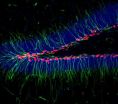(Press-News.org) Chestnut Hill, Mass. (Dec. 14, 2010) – With the holidays fast approaching and consumers in full shopping mode, new research shows that a seemingly innocent luxury item purchase can lead to an unintended, budget-busting spending spree.
The problem starts with the purchase of a new item, particularly those among designer product lines, luxury branded items, or consumer goods of high-end design. Once home, these items – graced with what researchers call salient design elements, such as a unique pattern or interesting color scheme – can look out of place when compared to other possessions. The most obvious solution to this aesthetic mismatch would be to return the item to the store.
But instead of making a return, consumers who were surveyed said they would make more purchases in an effort to try to surround their designer purchase with other luxury items and restore aesthetic harmony, according to marketing professors Vanessa Patrick of the University of Houston and Henrik Hagtvedt of Boston College, whose study is forthcoming in the Journal of Marketing Research. In fact, this additional string of purchases may represent a far larger expenditure than the initial purchase
What is driving these consumers? Emotions play a role in whether or not the buyer will return the item, Patrick and Hagtvedt found in a set of experiments and field studies involving hundreds of men and women.
When a new purchase fails to fit in with existing possessions, consumers regret the purchase and return it to the store. But when the mismatch involves a design item, consumers surveyed by Hagtvedt and Patrick said they experienced less regret and greater frustration. This led them to actively seek out ways to successfully incorporate the new purchase among their other possessions, often by making a string of new, additional purchases to match the item, a phenomenon the researchers dub aesthetic incongruity resolution.
"When we buy something with unique design elements and it doesn't fit, it frustrates us," says Hagtvedt. "This is because design has intrinsic value. So rather than returning the item, we actively seek ways to make the item fit, often by making complementary purchases. This has financial implications that may have been entirely unforeseen when the consumer made the initial purchase."
"In talking to people, it turns out that this is a pretty common occurrence," says Patrick. "We buy something we really like – after all what could be so wrong in purchasing a cute purple sweater or a unique little side table for the hallway? But, we take it home and that's when it happens…these items become really hard to give it up…so we buy more. And before we know it, we have purchased matching necklaces, shoes and bags, to go with the purple sweater or paintings, new wallpaper and new lighting to accommodate the unique side table."
For starry-eyed holiday shoppers, the researchers advise them to think twice. Ask yourself: Is it pretty? If yes, ask yourself: Does it match what I already own? Only then, consider buying.
INFORMATION:
The article is available at the Journal of Marketing Research website:
http://www.marketingpower.com/AboutAMA/Pages/AMA%20Publications/AMA%20Journals/Journal%20of%20Marketing%20Research/JMRForthcomingArticles.aspx
Anatomy of a shopping spree: Pretty things make us buy more
Rather than return, we surround out-of-place luxury items with more new purchases
2010-12-15
ELSE PRESS RELEASES FROM THIS DATE:
Study shows post-9/11 security zones blight landscape
2010-12-15
DENVER (Dec. 14, 2010) – A decade after the 9/11 attacks, significant parts of America's most prominent downtowns remain largely sealed off as `security zones,' but a newly published study by University of Colorado Denver professor Jeremy Németh says this has led to blighted landscapes, limited public access and a need for a new approach to urban planning.
"Our most open, public cities are becoming police states," said Németh, assistant professor of planning and design whose study was recently published in Environment and Planning A. "While a certain amount of security ...
Cell of origin for brain tumors may predict response to therapy
2010-12-15
For patients with glioma, the most common primary brain tumor, new findings may explain why current therapies fail to eradicate the cancer. A UCSF-led team of scientists has identified for the first time that progenitor rather than neural stem cells underly a type of glioma called oligodendroglioma. This distinction explains why oligodendroglioma is more responsive to therapy than other brain tumors such as glioblastoma multiforme.
The finding is significant, the researchers say, because it gives cancer doctors and researchers new cellular pathways to target in developing ...
Once upon a time in the Intensive Care Unit ...
2010-12-15
MONTREAL, December 14, 2010 – The first few days after birth is an important time when babies learn to recognize the sound of their parents' voice and the parents in turn bond with their children. However, the separation between parents and newborns admitted to the intensive care unit can be very difficult and can disrupt the early development of this relationship.
Jan Lariviere, a nurse in the neonatal clinic and the Neonatal Intensive Care Unit (NICU) at The Montreal Children's Hospital (MCH) of the MUHC led an innovative research project that suggests reading to newborns ...
Optical water quality assessment
2010-12-15
Madison, WI December 14, 2010 -- Scientists at the U.S. Geological Survey (USGS) have proven that measuring fluorescence could improve source water monitoring during a study of the McKenzie River in Oregon. The study was designed to assess the amount, type and source of dissolved organic carbon that exists in all sources of drinking water.
Dissolved organic carbon can react with chlorine during water treatment and form halogenated compounds, commonly referred to as disinfection byproducts. Some of these byproducts are regulated by the U.S. Environmental Protection Agency, ...
Human umbilical cord blood cells found to enhance survival and maturation of key brain cells
2010-12-15
Laboratory culture (in vitro) studies examining the activity of human umbilical cord blood cells (HUCB) on experimental models of central nervous system aging, injury and disease, have shown that HUCBs provide a 'trophic effect' (nutritional effect) that enhances survival and maturation of hippocampal neurons harvested from both young and old laboratory animals.
"As we age, cognitive function tends to decline," said Alison E. Willing, PhD, a professor in the University of South Florida's (USF) Department of Neurosurgery and Brain repair and lead author for a study published ...
Tiny channels carry big information
2010-12-15
They say it's the little things that count, and that certainly holds true for the channels in transmembrane proteins, which are small enough to allow ions or molecules of a certain size to pass through, while keeping out larger objects. Artificial fluidic nanochannels that mimic the capabilities of transmembrane proteins are highly prized for a number of advanced technologies. However, it has been difficult to make individual artificial channels of this size – until now.
Researchers with the U.S. Department of Energy (DOE)'s Lawrence Berkeley National Laboratory (Berkeley ...
New survey device gets better information on teenage sexual behavior
2010-12-15
PROVIDENCE, R.I. [Brown University] — Brown University sociologists have developed a device to gather more reliable data about risky sexual behavior among Ethiopian teenagers and young adults than conventional face-to-face interviews can produce. Simple, portable, low-cost, and low-tech, the group's new nonverbal response card allows respondents to communicate nonverbally and confidentially during face-to-face interviews. Professors of sociology David Lindstrom and Dennis Hogan, and postdoctoral research associate Megan Klein Hattori published their findings in the December ...
Special section on stigma in Perspectives on Psychological Science: Group differences, not deficits
2010-12-15
Psychological scientists are faced with the arduous task of identifying distinctions between humans without stigmatizing groups of people based on these differences. In this special section of Perspectives on Psychological Science, a journal of the Association for Psychological Science, experts present reasons for why differences in gender, race, sexual orientation, and culture should not be framed as deficits within the field of psychology.
Stigma From Psychological Science: Group Differences, Not Deficits—Introduction to Stigma Special Section (http://pps.sagepub.com/content/5/6/687.full) ...
CSHL scientists identify elusive neuronal targets of deep brain stimulation
2010-12-15
Cold Spring Harbor, N.Y. – Shooting steady pulses of electricity through slender electrodes into a brain area that controls complex behaviors has proven to be effective against several therapeutically stubborn neurological and neuropsychiatric disorders. Now, a new study has found that this technique, called deep brain stimulation (DBS), targets the same class of neuronal cells that are known to respond to physical exercise and drugs such as Prozac.
The study, led by Associate Professor Grigori Enikolopov, Ph.D., of Cold Spring Harbor Laboratory (CSHL), is the cover ...
The ethics of biofuels
2010-12-15
In the world-wide race to develop energy sources that are seen as "green" because they are renewable and less greenhouse gas-intensive, sometimes the most basic questions remain unanswered.
In a paper released today by the School of Public Policy at the University of Calgary, authors Michal Moore, Senior Fellow, and Sarah M. Jordaan at Harvard University in the Department of Earth and Planetary Sciences, look at the basic question of whether these energy sources are ethical.
In addition to arguing that the greenhouse gas benefits of biofuel are overstated by many policymakers, ...
LAST 30 PRESS RELEASES:
Why nail-biting, procrastination and other self-sabotaging behaviors are rooted in survival instincts
Regional variations in mechanical properties of porcine leptomeninges
Artificial empathy in therapy and healthcare: advancements in interpersonal interaction technologies
Why some brains switch gears more efficiently than others
UVA’s Jundong Li wins ICDM’S 2025 Tao Li Award for data mining, machine learning
UVA’s low-power, high-performance computer power player Mircea Stan earns National Academy of Inventors fellowship
Not playing by the rules: USU researcher explores filamentous algae dynamics in rivers
Do our body clocks influence our risk of dementia?
Anthropologists offer new evidence of bipedalism in long-debated fossil discovery
Safer receipt paper from wood
Dosage-sensitive genes suggest no whole-genome duplications in ancestral angiosperm
First ancient human herpesvirus genomes document their deep history with humans
Why Some Bacteria Survive Antibiotics and How to Stop Them - New study reveals that bacteria can survive antibiotic treatment through two fundamentally different “shutdown modes”
UCLA study links scar healing to dangerous placenta condition
CHANGE-seq-BE finds off-target changes in the genome from base editors
The Journal of Nuclear Medicine Ahead-of-Print Tip Sheet: January 2, 2026
Delayed or absent first dose of measles, mumps, and rubella vaccination
Trends in US preterm birth rates by household income and race and ethnicity
Study identifies potential biomarker linked to progression and brain inflammation in multiple sclerosis
Many mothers in Norway do not show up for postnatal check-ups
Researchers want to find out why quick clay is so unstable
Superradiant spins show teamwork at the quantum scale
Cleveland Clinic Research links tumor bacteria to immunotherapy resistance in head and neck cancer
First Editorial of 2026: Resisting AI slop
Joint ground- and space-based observations reveal Saturn-mass rogue planet
Inheritable genetic variant offers protection against blood cancer risk and progression
Pigs settled Pacific islands alongside early human voyagers
A Coral reef’s daily pulse reshapes microbes in surrounding waters
EAST Tokamak experiments exceed plasma density limit, offering new approach to fusion ignition
Groundbreaking discovery reveals Africa’s oldest cremation pyre and complex ritual practices
[Press-News.org] Anatomy of a shopping spree: Pretty things make us buy moreRather than return, we surround out-of-place luxury items with more new purchases




